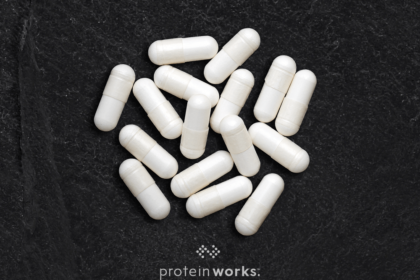A doctor, a patient advocate, and the most powerful figure in the methadone treatment industry presented competing visions for the future of American addiction medicine this week — a conversation that touched on stigma, patients’ rights, and a stark divide in health provider attitudes toward patients with addiction.
The debate centered on a single question: whether U.S. doctors should be able to prescribe methadone, a medication used to treat addiction to drugs like fentanyl and heroin, directly to patients.
While methadone is easily the most effective drug currently approved to treat opioid addiction, it’s accessible only at specialized clinics that require patients to participate in counseling, submit to frequent drug tests, and show up in person each day to receive a single dose.
“One of the major and main reasons why so many people are dying right now is because being on methadone just sucks, and for a lot of people, it’s worse than continuing to use drugs,” said Aaron Ferguson, the outreach manager for the Urban Survivors Union, a national organization dedicated to supporting the rights and well-being of people who use drugs. “Opponents of this are gonna say things like: Methadone is too dangerous, and doctors can’t manage it. Patients can’t be trusted with it. To me, these all pale in comparison to the number of lives that could be saved if we just extend this miracle molecule to the people that could benefit from it.”
The remarks came during a panel at the 2023 STAT Summit in Boston. The future of methadone treatment is being hotly contested in the medical community and in Washington, where Sens. Ed Markey (D-Mass.) and Rand Paul (R-Ky.) have introduced a bill that would allow doctors specializing in addiction to prescribe methadone directly. While that proposal has won the endorsement of the American Society of Addiction Medicine, it is strongly opposed by the American Association for the Treatment of Opioid Dependence, the trade group representing methadone clinics.
Amid an opioid overdose crisis currently claiming over 80,000 American lives each year, a growing coalition of patient advocates, health providers, and lawmakers have charged that the current methadone treatment paradigm is costing thousands of lives. Allowing doctors to prescribe methadone directly to patients is long overdue, they argued, and health providers across the country are ready and willing to do more to prevent overdose deaths. Moreover, they argue, Canada, Australia, and many European countries are far more liberal when it comes to methadone dispensing, and drug users there experience far lower rates of overdose, infectious disease transmission, and death.
“I do believe I’m part of a new generation of doctors that are being trained to prescribe these types of medications, regardless of my interest in addiction,” said Zoe Adams, a medical historian and resident physician at Massachusetts General Hospital. “It’s still a work in progress. There’s still a ton of stigma. But the longer that methadone remains in the dark, in the silos of methadone clinics, the stigma is just going to perpetuate itself.”
Methadone clinics, however, have strongly resisted efforts to significantly liberalize methadone treatment, and have launched an advocacy campaign titled “Program, Not a Pill,” meant to oppose the Senate legislation and highlight their belief that patients at methadone clinics require more than the medication itself.
Mark Parrino, AATOD’s founder and president, cautioned during the panel that achieving sweeping change might not be so easy. The health system, he argued, is unprepared and even unwilling to make methadone a part of primary care. Potential obstacles, he said, include doctors’ lack of enthusiasm about prescribing methadone; pharmacists’ unwillingness to stock and dispense it; and drug manufacturers’ reluctance to manufacture and distribute it more widely, especially following the lawsuits and criticism many have experienced in the wake of the opioid crisis and the prescription opioid oversupply that accelerated it.
Parrino warned, too, that a sudden increase in methadone access could lead to a spike in methadone-involved overdose deaths. Methadone is an opioid itself, and works by stimulating the brain’s opioid receptors, thereby helping people seeking to reduce their illicit opioid use avoid withdrawal symptoms without experiencing the same euphoria or impairment associated with heroin or fentanyl. Though a small number of methadone-involved overdoses do occur, the medication is vastly safer than opioids for sale on the illicit market, which increasingly contain a dangerous mix of fentanyl and xylazine.
“My concern, frankly, having been involved in this for over 40 years, is other backlashes or unintended consequences,” said Parrino. “This is not to say that we can only be driven by those sorts of fears. That’s not the point. But it means we have to be mindful, and we have to be thoughtful about how we move any policy forward.”
Ferguson countered that arguments centered on potential upticks in methadone-involved deaths are “focusing on the wrong thing,” and that any valuable medical intervention brings corresponding risks.
“When you’re talking about a treatment that can save lives, we’re willing to stomach all kinds of risks,” he said. “When you look at things like brain surgeries, heart surgeries, I mean, antibiotics — 30,000 Americans die every year from antibiotic-resistant bacteria, but no one is locking antibiotics away in wall safes. … If this was any other group of Americans that were dying by the stadium, we wouldn’t be quibbling about the relatively low number of unintended consequences.”
Adams agreed, citing evidence from the emergency measures the federal government put into place during Covid-19. In particular, policies surrounding “take-home” methadone — allowing patients to take additional doses home, so they don’t have to appear at their clinic each day — became far more relaxed. Despite some initial fears, data later showed that unintended consequences like greater methadone misuse or an increase in methadone-involved overdoses never materialized.
That data, Adams said, only makes the case for Markey and Paul’s legislation in Washington stronger.
“We have this forward momentum recently due to what happened during Covid, when methadone was made more available to people and how people really reported that they felt like they had more control over their lives,” she said. “People didn’t divert methadone, people didn’t die out of proportion in terms of overdose deaths from methadone. And I think we’re taking that momentum from those positive results and trying to push the legislation as much as we can.”
STAT’s coverage of chronic health issues is supported by a grant from Bloomberg Philanthropies. Our financial supporters are not involved in any decisions about our journalism.









